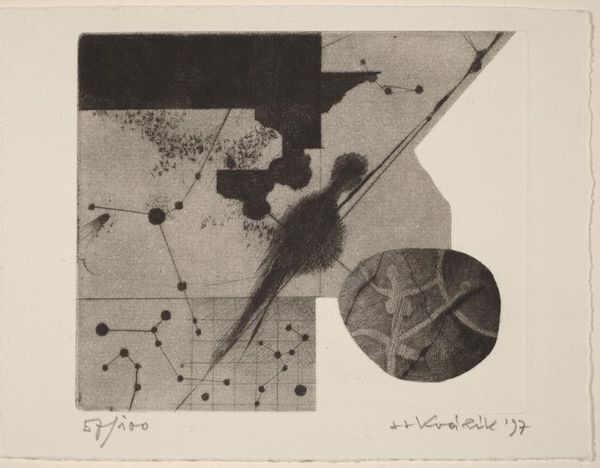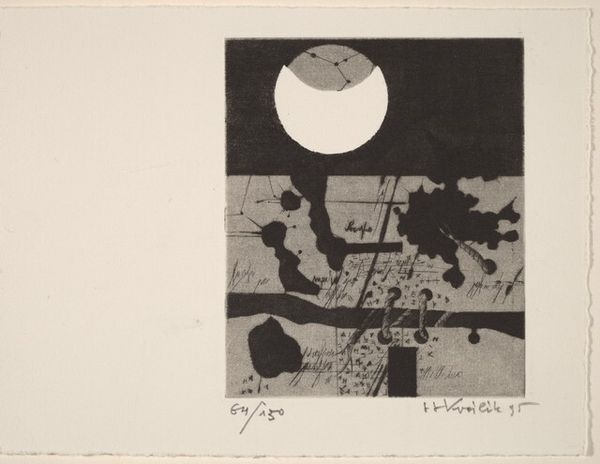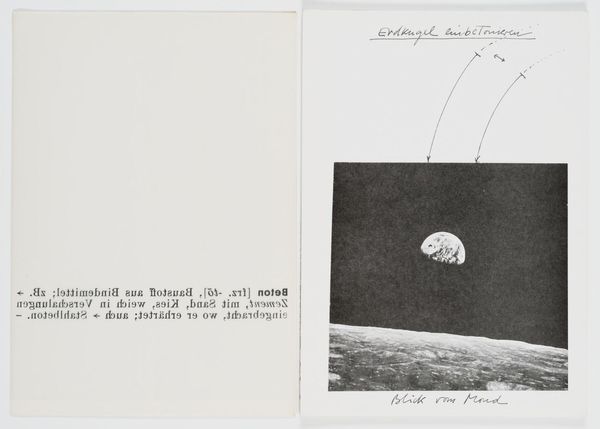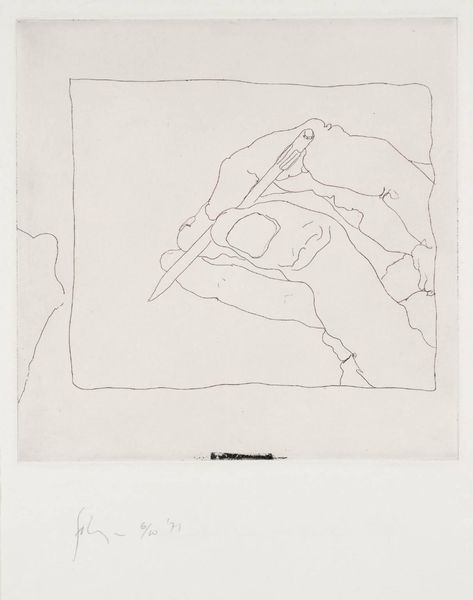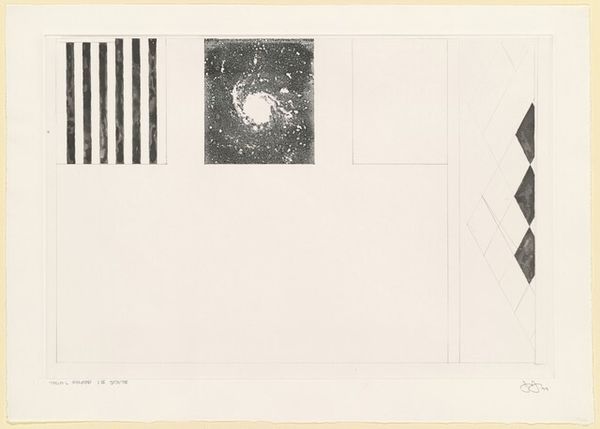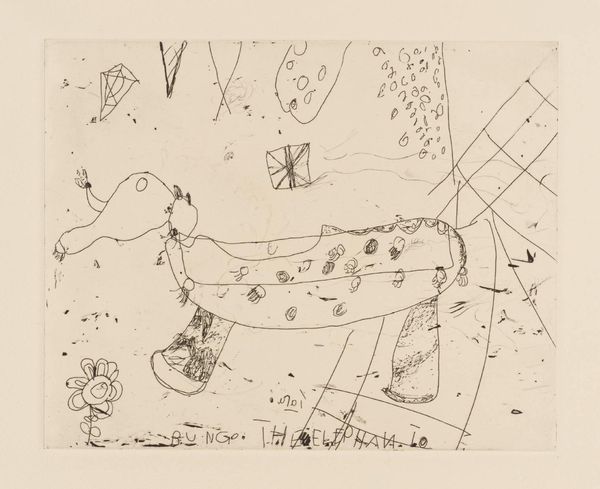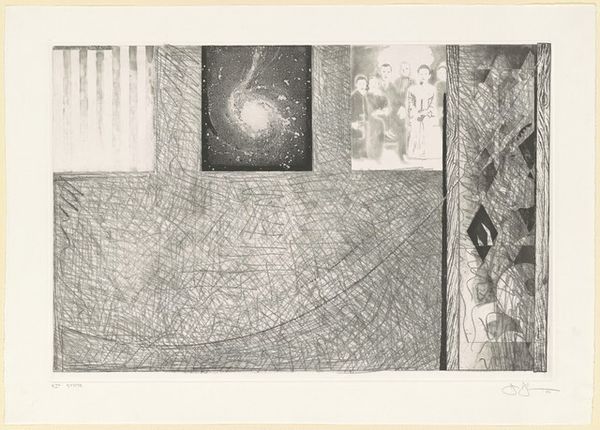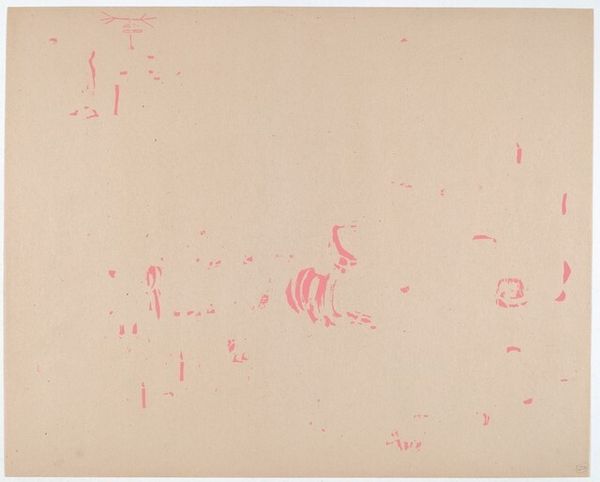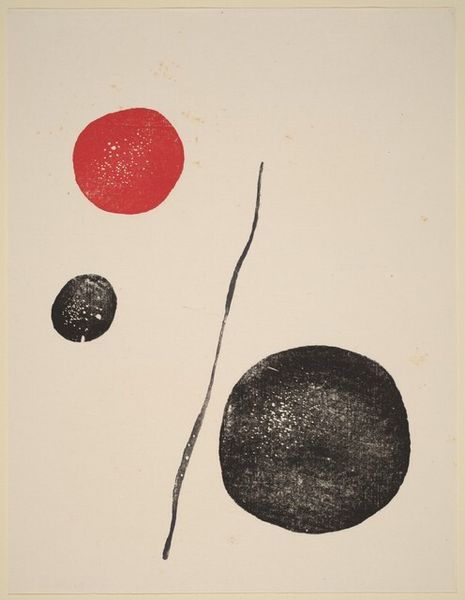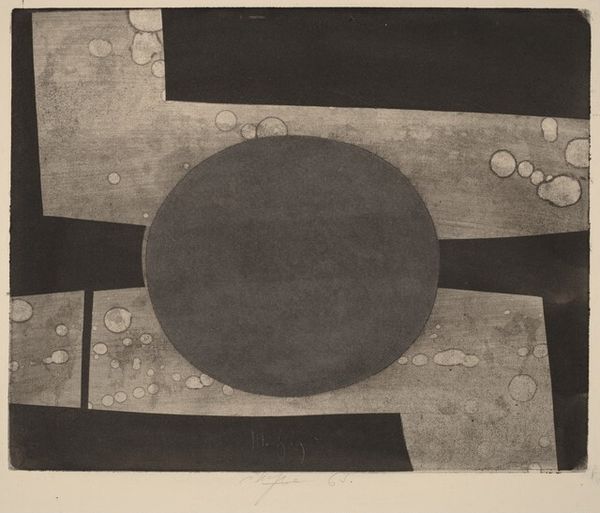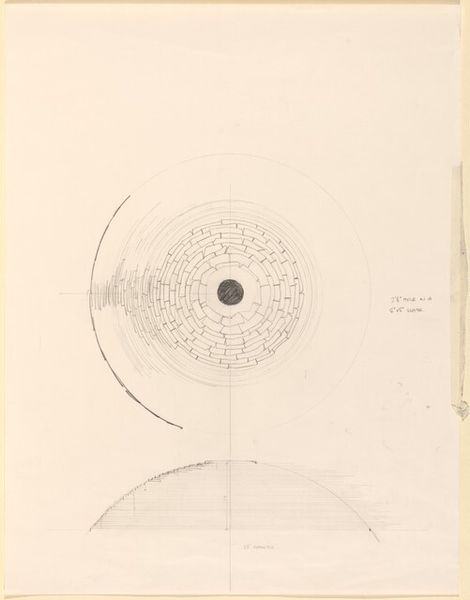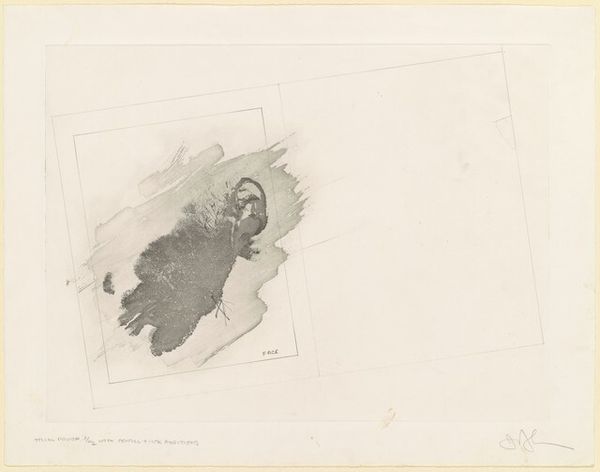
drawing, print, etching, paper
#
drawing
# print
#
etching
#
paper
#
geometric
#
abstraction
Dimensions: sheet (open): 14.6 x 42.1 cm (5 3/4 x 16 9/16 in.) sheet (closed): 14.6 x 21 cm (5 3/4 x 8 1/4 in.)
Copyright: National Gallery of Art: CC0 1.0
Curator: The overall mood is serene, isn't it? A kind of contemplative hush hangs over it. Editor: Indeed. The piece before us is titled *New Year's Print, '97* by Jaroslav Králík, created in 1996. We see that the artist employed printmaking, etching, and drawing techniques, rendered on paper. Curator: The combination of those scribbled equations, star charts, or what appear to be constellations against the black backdrop... it’s as if the artist is mapping out a future, literally, while grounding us in historical knowledge or maybe a bit of magical thinking, or hope. Editor: Historically, the printmaking boom in the latter half of the 20th century allowed artists like Králík to democratize art-making. Prints could reach wider audiences and foster intellectual exchange, especially during a period of rapid socio-political changes. Curator: Democratization of hope, maybe? I find it interesting to imagine Králík hunched over a plate, crafting a collective New Year's wish. Editor: Well, there’s also that stark contrast between the chaotic etching, perhaps symbolic of our reality, versus the organized layout of stars offering order and aspiration, quite pertinent as we navigate societal shifts toward an uncertain future. Curator: True, but the deliberate lack of definition, the fuzziness, lends it a mystical quality. It reads more as a wish, less as a roadmap, at least to me. We rarely think of “abstraction” as something we can actively feel or hope for as such. Editor: That may be, but in 1996, amidst growing debates around globalization and identity, the act of making prints, distributing and democratizing symbolic wishes for the new year surely was Králík’s contribution to wider discussions on art’s social and ethical roles, beyond aesthetics. Curator: Maybe so! But for me, it speaks volumes about the way art can encapsulate dreams of things not yet visible or articulated, capturing the silent language of collective hope that has the potential to create different futures. It's a little paradoxical that art is something that exists now, but also in that potential of a yet-to-arrive future, as we are considering New Year's. Editor: An astute observation. These combined perspectives – historical and artistic - definitely show us why art from decades ago speaks to us. We should continue considering the potential those historical circumstances afford.
Comments
No comments
Be the first to comment and join the conversation on the ultimate creative platform.
